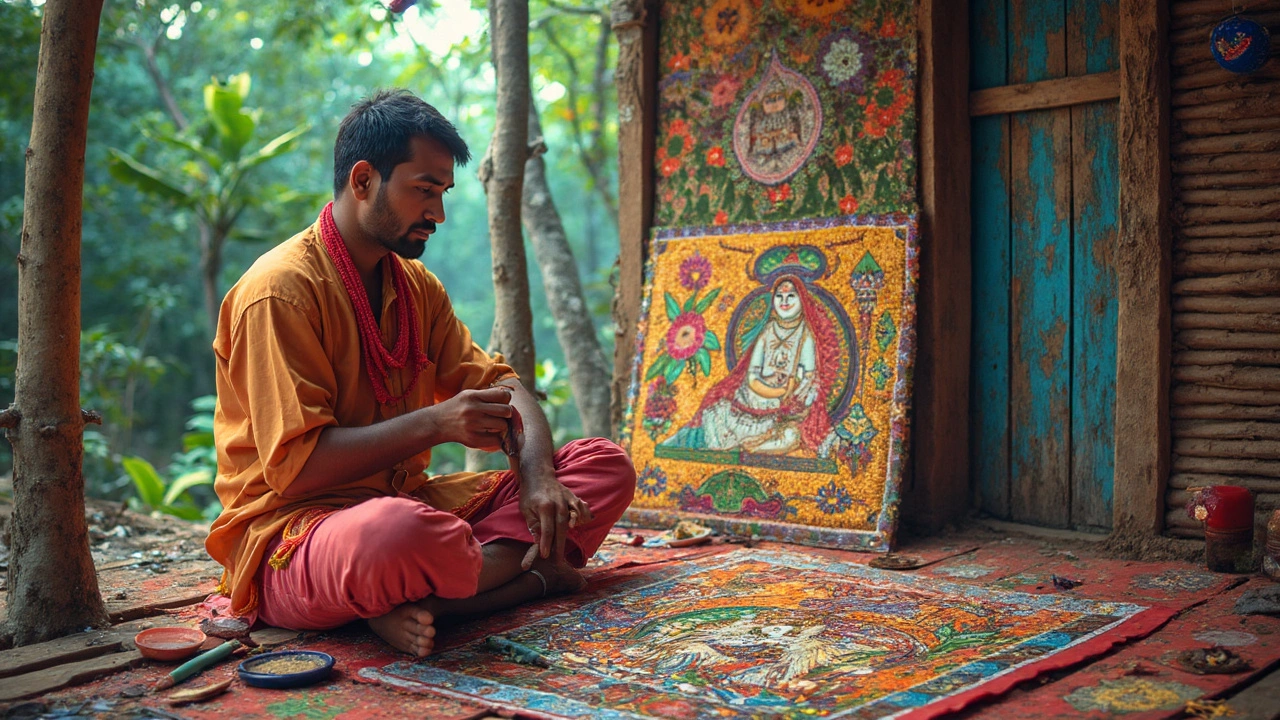Indian Art: A Journey Through Tradition and Modernity
When you think of Indian art, a burst of colors, intricate patterns, and centuries‑old stories comes to mind. It’s not just about pretty pictures; it’s a window into daily life, religion, and the way people see the world. In this guide you’ll get a quick look at why Indian art matters, the main styles you’ll meet, and how you can enjoy it today.
Why Indian Art Captivates Everyone
First off, Indian art is wildly diverse. From the bright murals of Rajasthan to the delicate silk paintings of Mysore, each region adds its own flavor. That variety keeps things fresh and gives you a reason to explore beyond one single style. Second, the art often tells a story – a myth, a historical event, or a simple village life scene. Those stories make the artwork relatable, even if you live thousands of miles away.
Third, the techniques have been handed down for generations. Artists still use natural dyes, hand‑carved brushes, and traditional loom patterns. Seeing a piece created with those methods makes you appreciate the skill behind every line and hue. Finally, Indian art keeps evolving. Contemporary creators blend classic motifs with modern media, producing pieces you’ll see in galleries and on Instagram alike.
Key Forms of Indian Art You Should Know
Madhubani Paintings – Originating in Bihar, Madhubani uses geometric shapes and bold lines. Artists often work on walls or homemade paper, and the subjects range from nature to Hindu deities.
Warli Art – This tribal style comes from Maharashtra’s coastal villages. It relies on simple stick figures and a limited color palette, usually just white on a mud base. The scenes show daily activities, making it a snapshot of village life.
Miniature Paintings – Found in Mughal, Rajput, and Pahari schools, miniatures are tiny but packed with detail. They often depict royal courts, battles, and love stories, all rendered with fine brushwork.
Rangoli Designs – While technically a floor art, Rangoli reflects the same love for pattern and color that you see in painted works. Made with rice flour, colored powders, or flower petals, these designs welcome guests and celebrate festivals.
Modern Fusion – Today’s Indian artists mix digital tools with traditional motifs. You’ll find street art that quotes ancient epics, or sculpture that fuses bronze casting with recycled materials.
Knowing these styles gives you a quick map for exploring deeper. If you visit a museum, look for the label – it will tell you the region, the period, and the technique used. Online you can search for the art form name plus “history” to get short videos or articles that break down the basics.
Want to bring Indian art into your own space? Start small with a Madhubani print or a Warli wall sticker. They’re affordable, look vibrant, and carry a piece of the culture with you. If you’re a DIY fan, try a simple Rangoli design using chalk on your floor; it’s a fun weekend project that connects you to a centuries‑old tradition.
Indian art isn’t just for scholars or museum‑goers. It’s a living, breathing part of everyday life in India, and it’s easy to enjoy no matter where you are. Dive into the styles, spot the stories, and let the colors inspire your own creativity.
